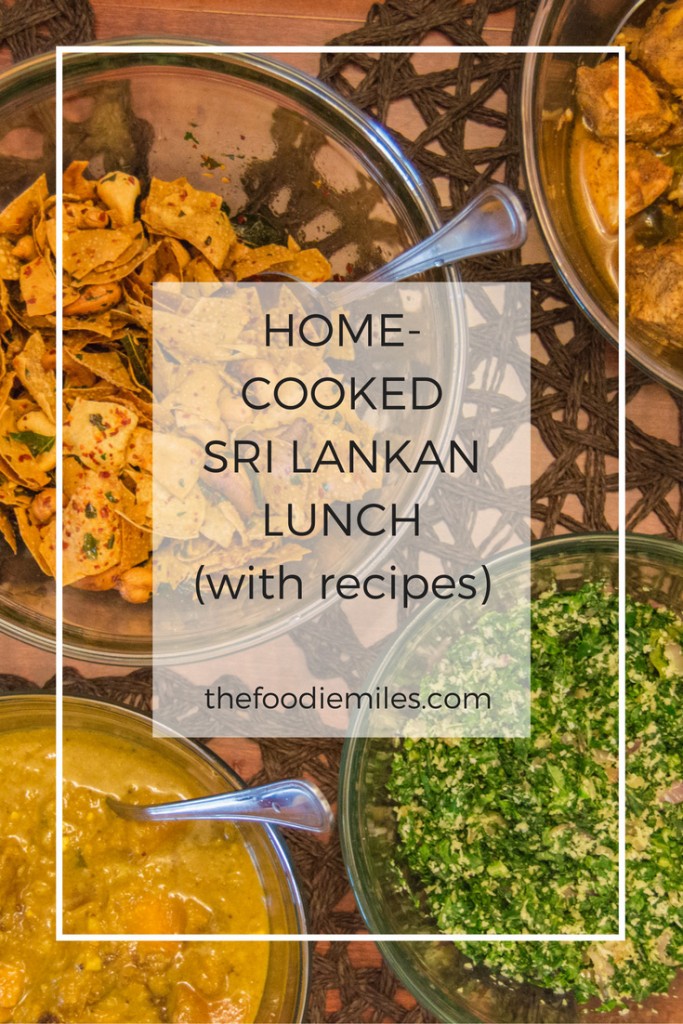
If you are a foodie it’s very important to find a friend who is as obsessed with food as you are. Because taking an hour walk to a must-visit restaurant or standing in line of 30 people to try a trendy dessert is more fun when you have company. Also you don’t feel guilty taking 200 pictures of food before eating it because your friend is doing the exact same thing.
Such friend for me is Yashasvi, or Yash as everybody calls her, who I met during my stay in Sri Lanka. Together we devoured contemporary Sri Lankan dishes at Kaema Sutra, acted all fancy eating tiny sandwiches at Hilton Afternoon Tea and got tipsy on original liquor from Montenegro. But she is not only a devoted foodie, she is also a wonderful cook.
Yash is the kind of cook I would like to be but I don’t have the patience or the perfectionism. She is also a food writer, a restaurant critique (check out her Instagram @the_foodie_in_me) and was once the owner of home-based cake bakery and creator of Travelling Food Tuk – a former lunch delivery service in Colombo.
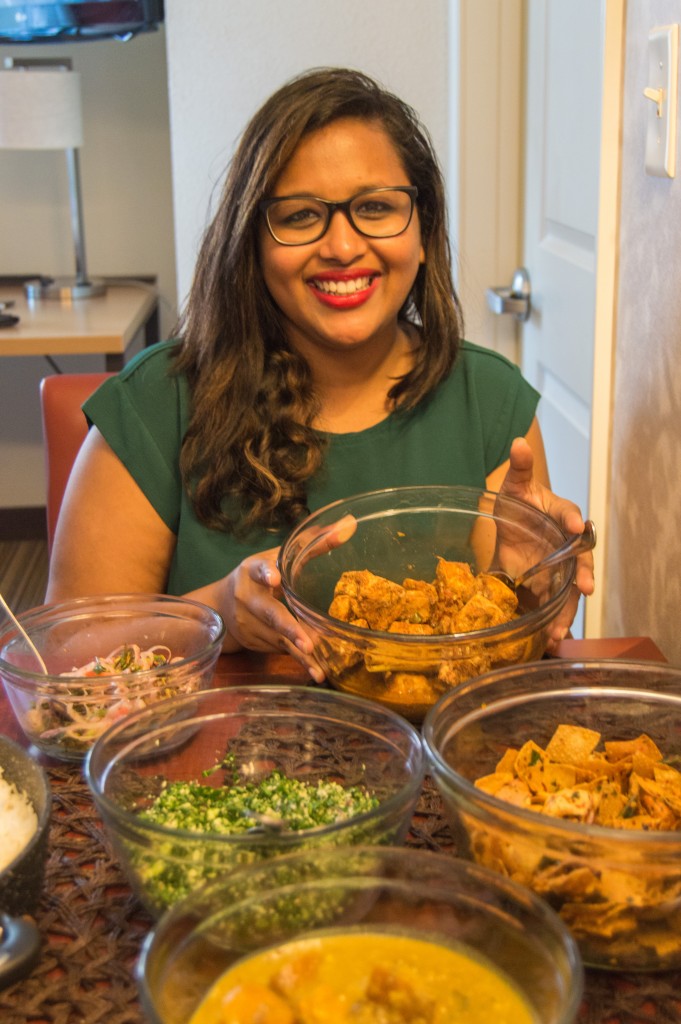
Dinner-parties at her place were my favorite late night entertainment in Sri Lanka. A dinner at Yash’s means an elegantly set up table with placemats matching dinnerware and napkins folded as swans. It means delicious food with perfectly balanced flavors, textures and colors because she is the kind of person who will go to three different supermarkets to find tarragon she planned to use as plate deco! It also means some heated discussions on topics ranging from women rights to global warming.
Now you can imagine my excitement when Yash told me she is coming to Boston. We had a good 3 hour chat over afternoon tea at Boston Public Library, tried the best lobster rolls in town and spent 30 minutes in line to try the famous Italian cannoli. And then there was dinner, of course. No tarragon this time, only curry leaves, tamarind and curry powder, because Yash was making Sri Lankan rice and curry. On the menu: spicy chicken curry, kalupol wattaka (pumpkin curry), kale mallum (tempered kale salad), bandakka dehiambula (fried okra salad) and papadam badum (mix of crispy chips).
Don’t get scared yet, I will take you into the world of complicated and funny-sounding Sri Lankan food names and explain each one along the way. Let’s start with spicy chicken curry, or kukul mas mirisata in Sinhala language. Chicken curry is one of the most popular and beloved dishes in Sri Lanka that I have tried many a time. But only now, while watching Yash preparing chicken, I learned that you don’t have to add coconut milk to it – big discovery! Coconut milk is not traditionally added to meat curries. Meat juices combined with spices and slow-cooking method provide you with wonderful creamy gravy.

What I love about Yash is that she knows food inside and out and everything she does in the kitchen has a reason behind it. For example, it’s always better to use chicken pieces with bones rather than boneless breasts, because the bone marrow gives an extra kick of flavor to curry. Back in the days, there were no supermarkets selling packaged deboned cuts so women would get a whole chicken from a local shop and wouldn’t let anything go to waste.
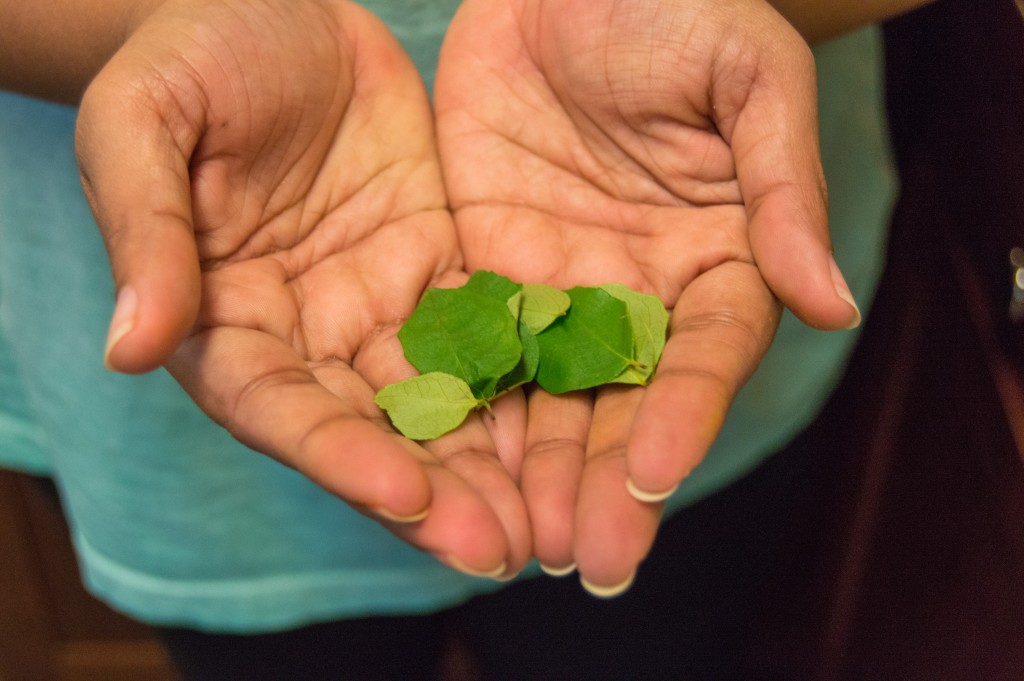
The complicated part of cooking Sri Lankan rice and curry for me is to get all those spices together. You need chili powder and chili flakes, roasted curry powder and unroasted curry powder, curry leaves and a dozen other things you probably haven’t heard of before. But the beauty of making curries is that once you have all those spices in your kitchen cabinet it becomes pretty easy. No marinating – which means no need to plan a couple of hours ahead. No complicated instructions either: mix chicken pieces with all the spices, onion and garlic at once, cover it with water, place on stove and let it be. 30 minutes later open the magic pot and enjoy your kukul mas mirisata.
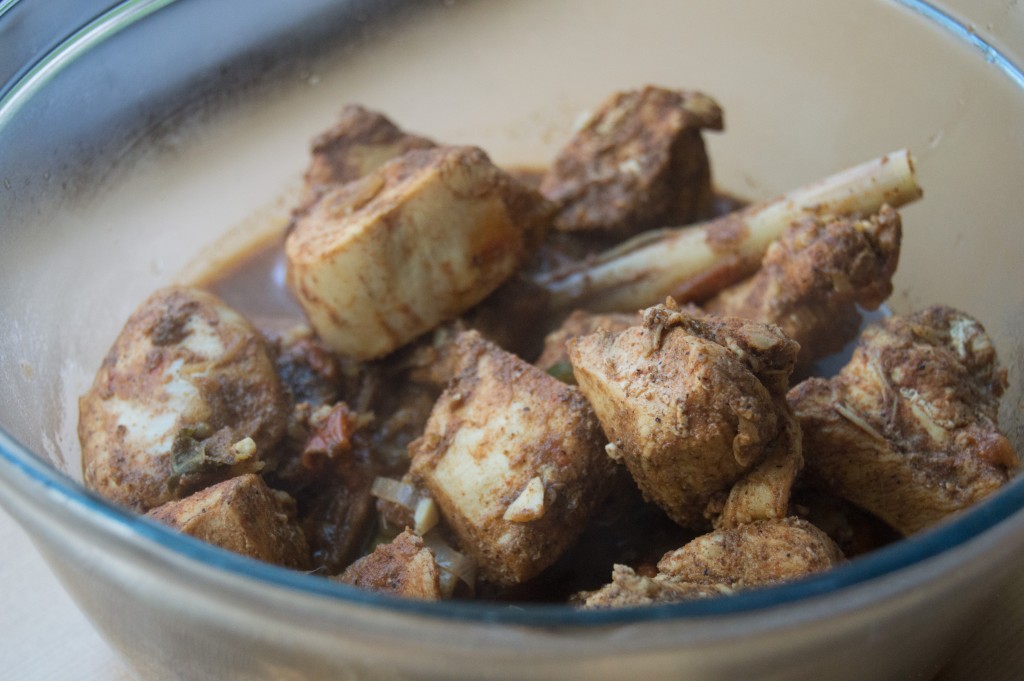
Watching Yash work her magic I can’t believe there’s no heart-warming story about learning the skills from her mother in the kitchen of her childhood house in Horana. But the truth is quite the opposite: “My mom doesn’t enjoy cooking and was worried when I left office job to do cooking full-time. She is, nevertheless, very supportive”. So Yash learned like a lot of women do: during her University years she moved to a rental apartment and cooked at home since eating out was expensive.
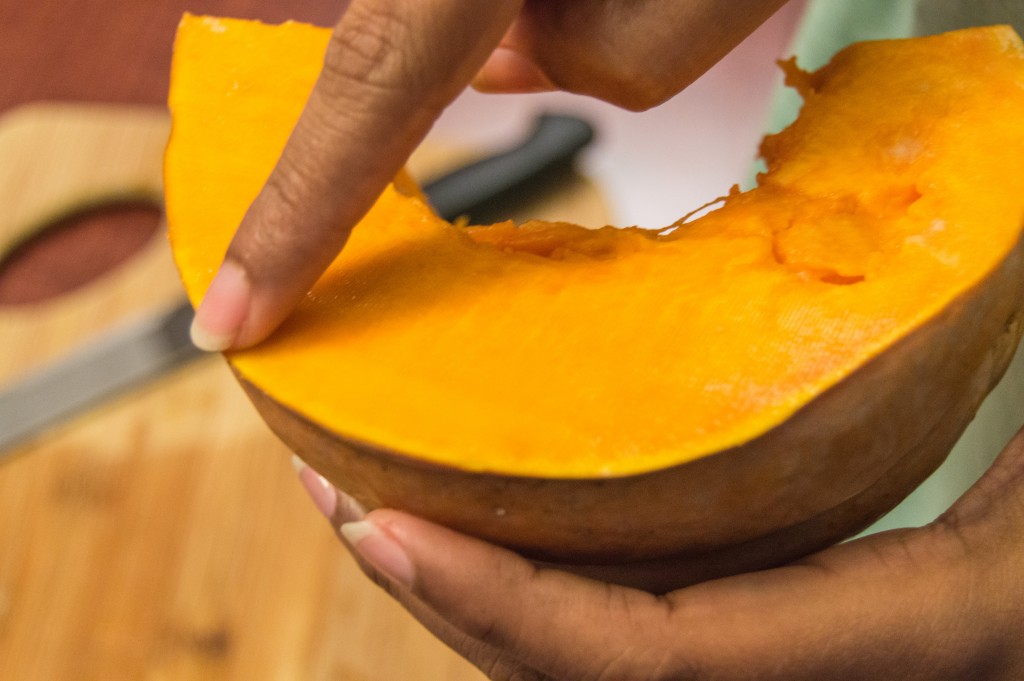
“This line under the rind of pumpkin should be yellow in color and never brown. Brown would indicate that it’s overripe”, – Yash has started on kalupol wattakka, or to make it easy – pumpkin curry. The process of making this curry is similar to that of preparing chicken: mix pumpkin pieces with spices, add water and leave on stove. Though, the set of spices differs and you will use coconut milk later on.
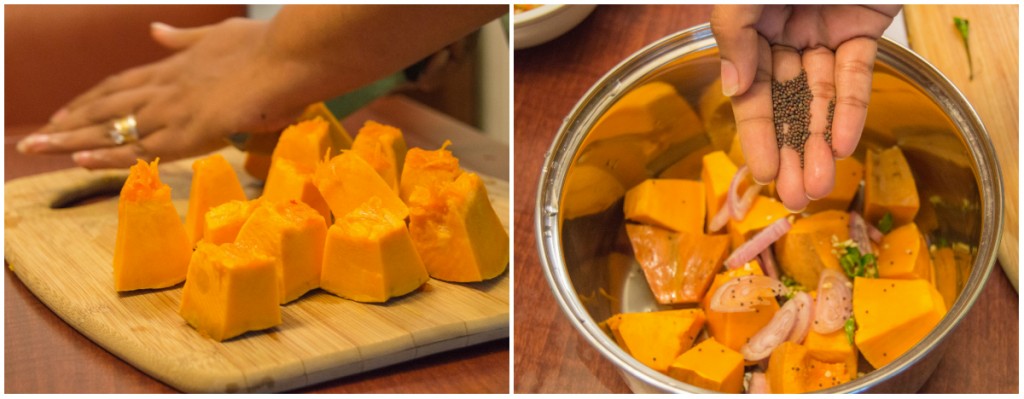
Another big surprise: rice is one of the ingredients in this curry. I knew that Sri Lankans love rice but this is just a great illustration of the extent of this love: not only they eat curries WITH rice, they add rice INTO their curries. It is actually really creative, to my mind: raw rice grains are roasted on pan along with grated coconut until golden brown, crushed in a mortar to get coarse texture and then added to simmering curry.

I will say upfront that food prepared by this woman is one of the best examples of Sri Lankan cuisine I have ever tried both at restaurants and home-cooked. One of the main reasons, to my mind, is that Yash knows how to balance flavors (as banal as it sounds). I only use salt and pepper in my cooking – so it’s very hard to screw up. When you have to mix up a dozen of spices in 1 curry it gets complicated. For many people “spicy” becomes equal to “tasty”. “You should feel the taste of chili not the burning sensation”. Same goes for curry powder: “Many people use so much curry powder that it overpowers the flavor of vegetables and all curries end up tasting the same”.
Even salt is used very cautiously. For example, in bandakka dehiambula (a salad made of fried okra) she opts to skip it all together: “lime juice is enough, besides, all the other curries have salt in it”. Okra, or as it’s also called, lady fingers, is a plant common in Sri Lanka and used in curries and stir fries but Yash is preparing dehiambula with it.
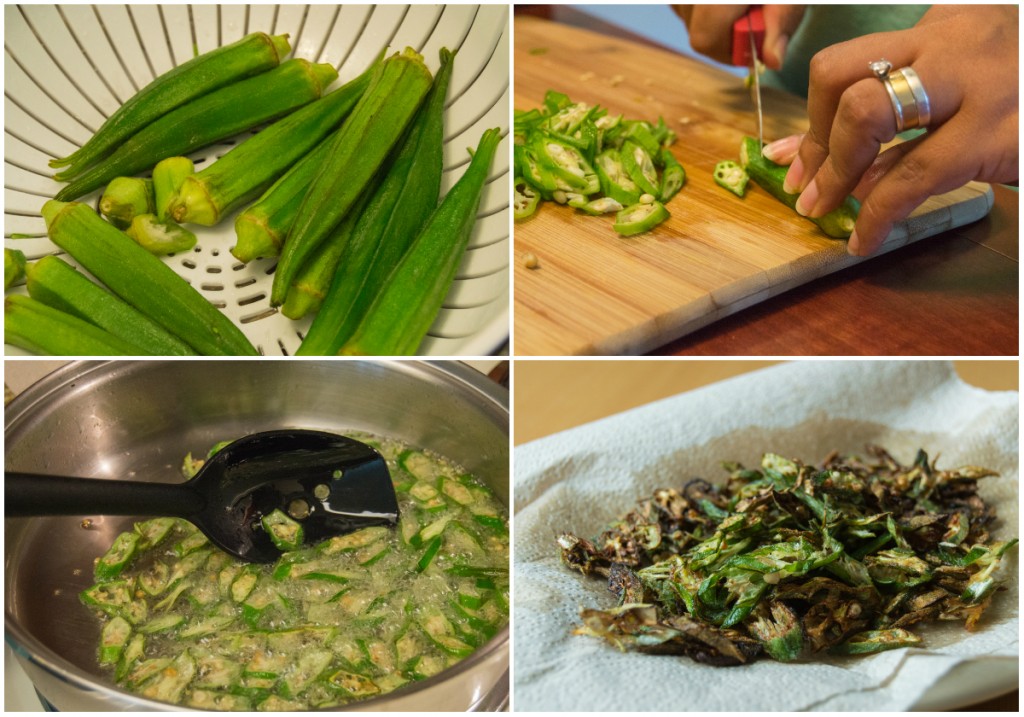
Dehiambula usually stands for raw salad dressed with lime juice (“dehi” means “lime” in Sinhala language) and is made of local leafy greens like gotukola. Fried okra is not commonly used for this dish but it comes out beautifully and gives dehiambula a nice crunch.
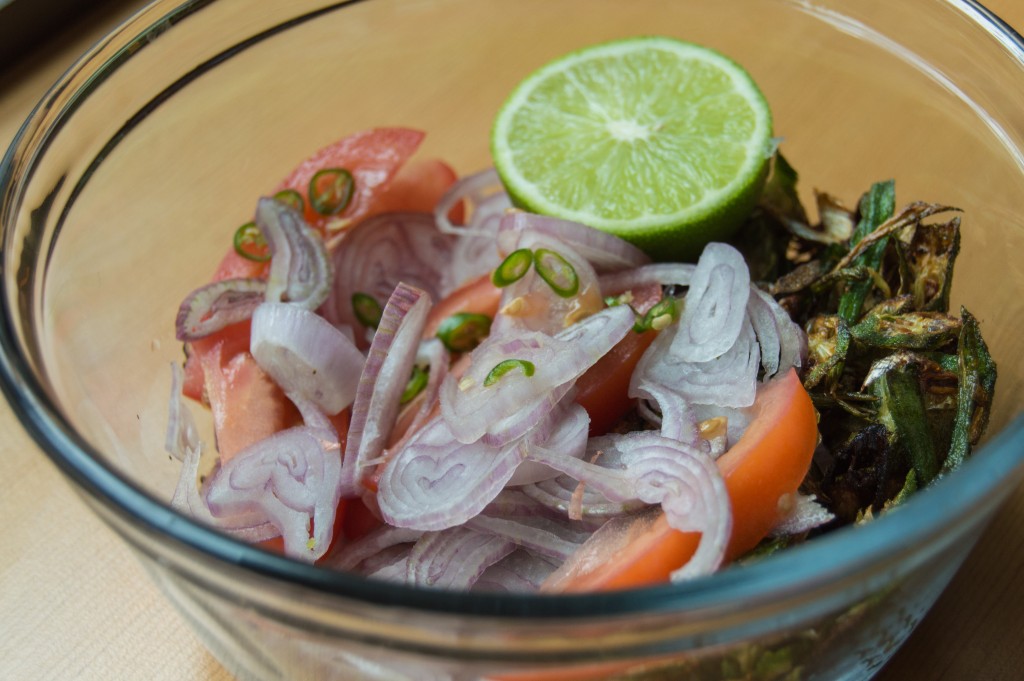
If you thought that curries that come with rice are picked randomly, you couldn’t be further from truth. There are no official rules on how to choose curries that are served at one meal but usually you would follow this logic:
- meat or fish curry with water-based gravy. Traditionally no coconut milk is added to meat, but a little amount can be added to some fish curries.
- wet curry (thick gravy) made of dhal (yellow split peas), potato or manioc. It is usually yellow in color and mild in flavor with very little or no chili powder at all. Roasted curry powder is also never used for this type of curries since it has a very strong flavor, unroasted curry powder might be used, though.
- dry vegetable curry made of carrots, beetroot, beans, etc. This curry would be spicy and strong in flavor. A tiny amount of coconut milk might be added at the end of cooking just to balance out the spiciness but not to make it creamy in texture.
- leafy green dish (simple raw or withered greens)
- fried dish like deep-fried cutlets, omelette, or papadam (Sri Lankan deep-fried chips)
As Yash explains it, the idea is to combine different flavors, textures and cooking methods. So there should be curries with gravy and dry curries; spicy and mildly flavored; stewed, fried and fresh. As I mentioned above, these are not set rules and you can get creative. So in case with our dinner there is chicken curry (meat dish), pumpkin curry (wet yellow curry), okra dehiambula is somewhat of a mix between dry veggies and fresh salad. Now we are missing leafy greens and a fried dish.
Since traditional Sri Lankan greens are not available in USA we are using kale to make mallum – withered greens. Traditionally mukunuwenna leaves are used for this dish (Sinhala names make me crack up every time I say them out loud).

It has to be cut up finely in order to blend well with grated coconut. Leaves, coconut, onion and curry leaves are then tempered for several minutes over medium heat (note: no additional oil is required).
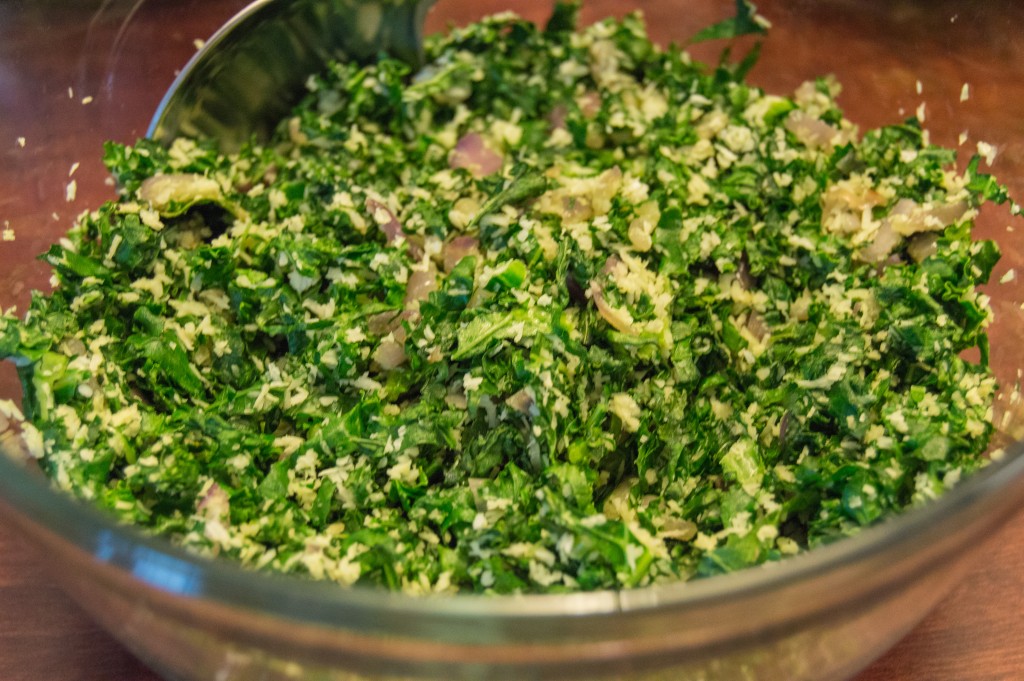
As for fried dish, Yash is making Sri Lankan favorite – papadam. If you have to compare it to Western food, papadam is something like chips, but made of wheat and black gram flour. Round-shaped discs are sold in supermarkets in Sri Lanka (or Indian grocery stores in other countries), all you have to do is deep-fry them in coconut oil. Yash takes it up a notch by adding fried cashews, curry leaves, chili flakes and mixing it to make a so-called papadam badum.
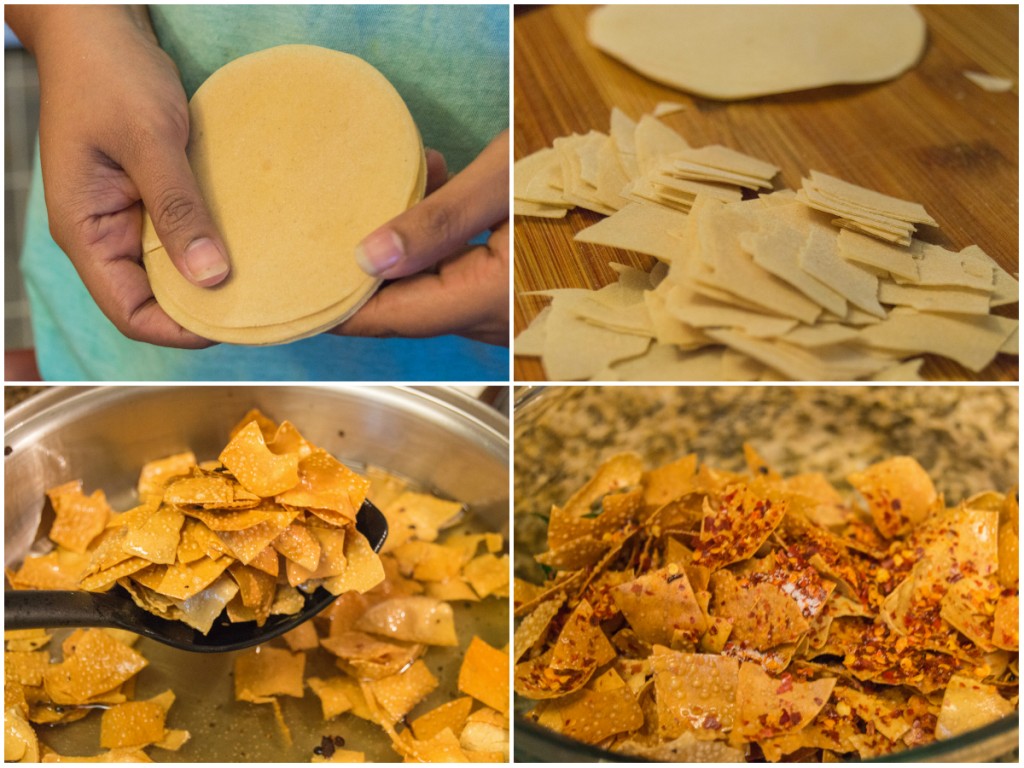
And there you have it: a beautiful set up of rice and curries. As Sri Lankan as it gets.
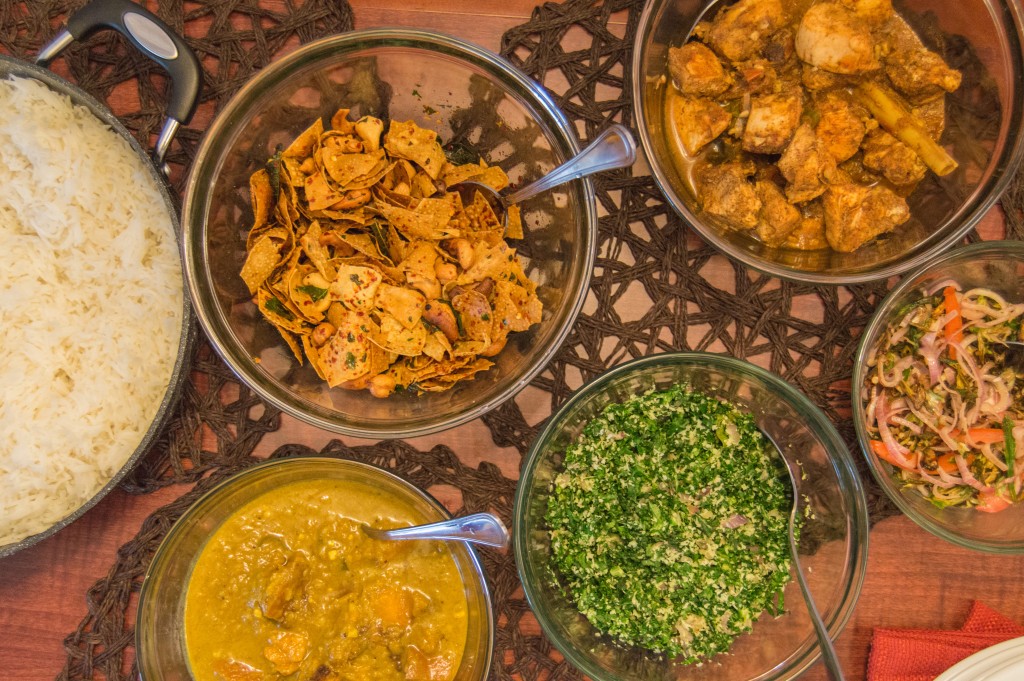
Preparation of a single dinner turned into a proper educational course: I just couldn’t miss a chance to ask Yash dozens of questions I had about Sri Lankan cooking. And she was patient to answer them all and at length. Do I even need to say how delicious this food was? Yes, I do. It was incredible. One of the best Sri Lankan rice and curry dinners I’ve had. Actually, one of the best dinners I’ve had at all, Sri Lankan or not.
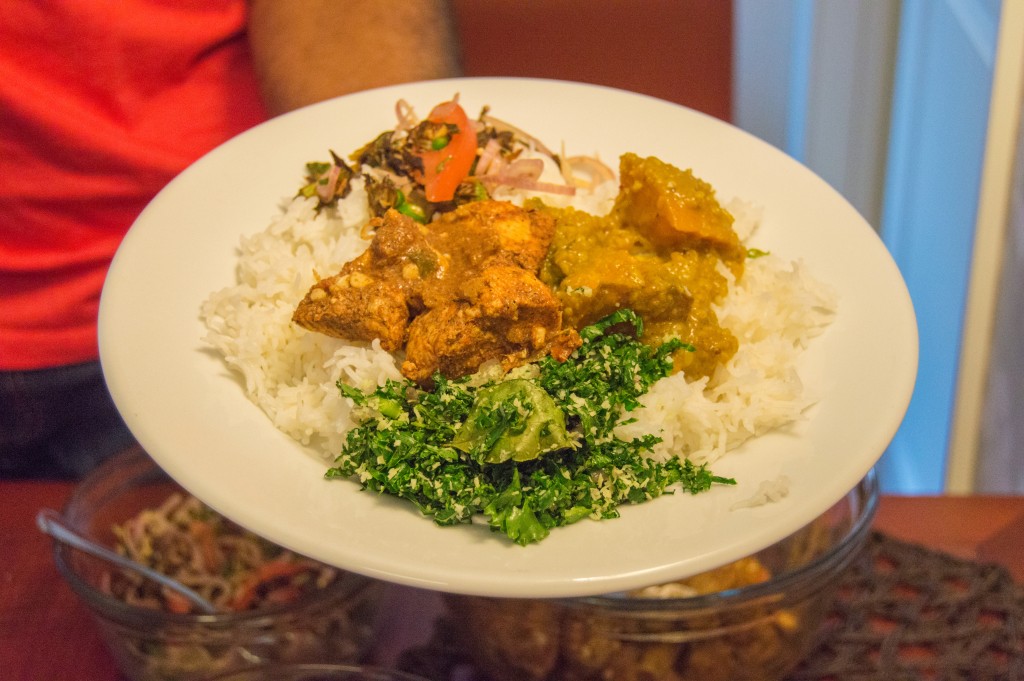
Now, that Yash is leaving Boston, I will look forward to our next encounter and food adventures in new countries. Who knows maybe next time we will be sharing a pizza Margherita in Napoli, tajine in Morocco or borsch in Russia!
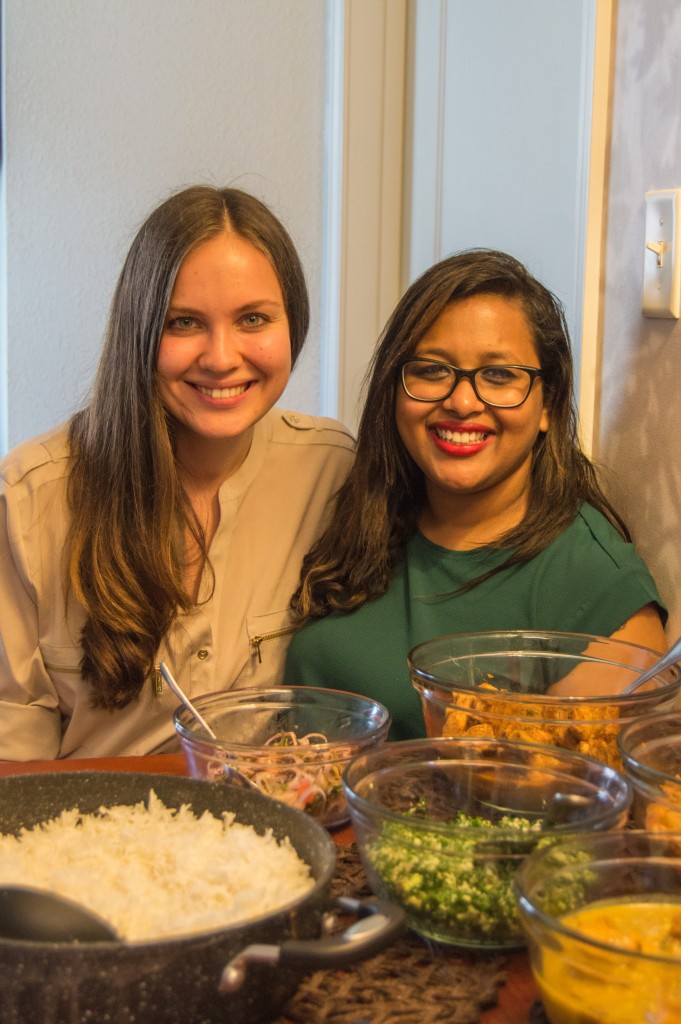
PS. If you live outside of Sri Lanka, look for all traditional ingredients including spices in Indian grocery stores.
[yumprint-recipe id=’7′][yumprint-recipe id=’8′][yumprint-recipe id=’9′][yumprint-recipe id=’10’][yumprint-recipe id=’11’]



